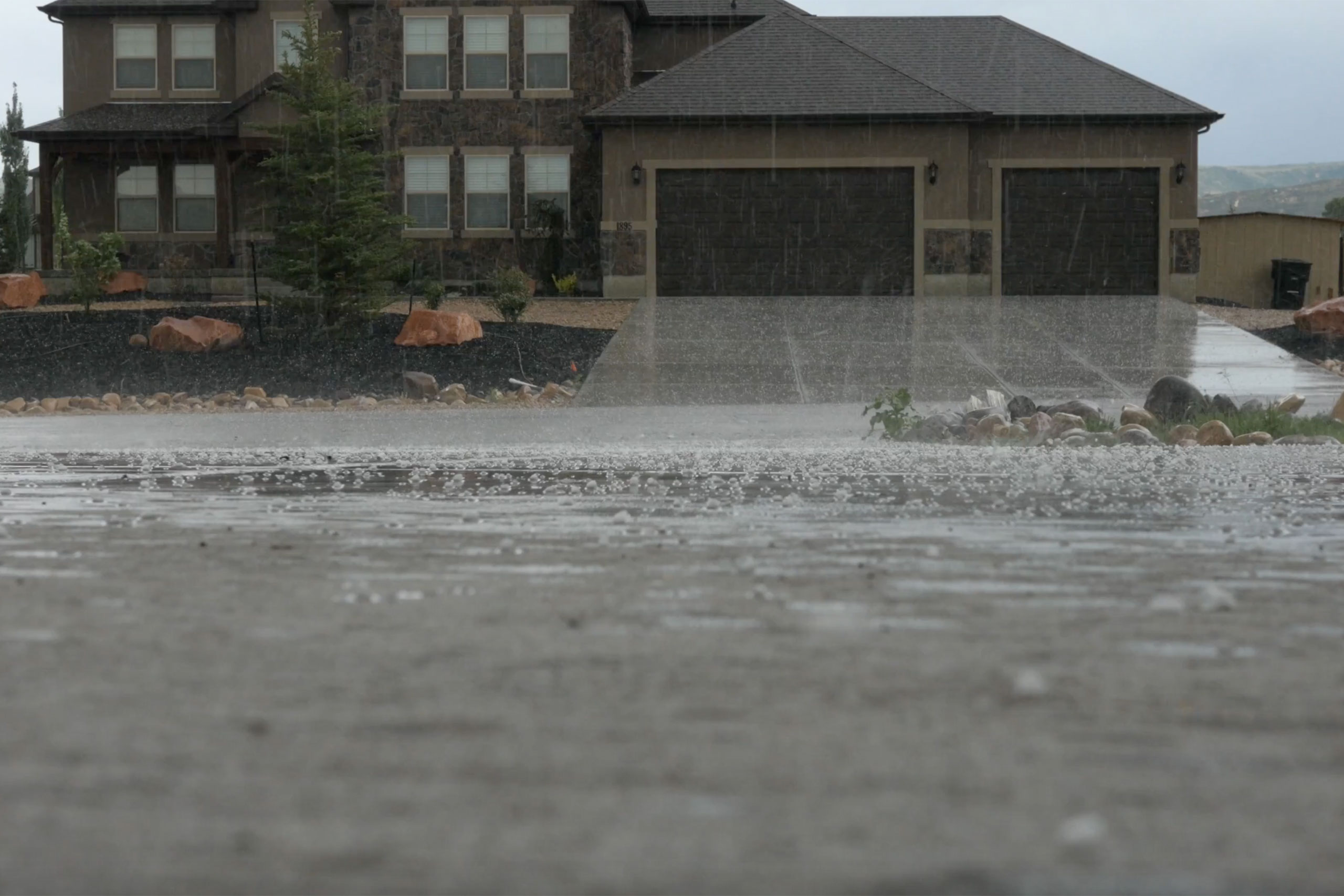Things You Should Do After a Major Hail Storm Damages Your Roof

Hailstorms can wreak havoc on your home, causing significant damage to your roof and leaving you with a headache-inducing mess to clean up. Especially the recent hail storm that demolished everything in its path here O’Fallon, MO. When your roof sustains damage from hail, it’s crucial to take immediate action to prevent further deterioration and costly repairs down the line.
In this guide, we’ll outline five essential steps to take after a hailstorm damages your roof, helping you navigate the aftermath with confidence and efficiency.
Assess the Damage
The first step after a hailstorm hits your area is to assess the damage to your roof. While some damage may be immediately visible, such as dented shingles or missing tiles, other issues may be less obvious. Grab a ladder and carefully inspect your roof from the ground, looking for signs of hail damage such as bruising, cracks, or granule loss on shingles. Additionally, check for any debris or branches that may have fallen onto your roof during the storm, as these can cause further damage if left unattended.
If you’re comfortable doing so, climb onto your roof to get a closer look at the damage. Pay special attention to areas where the hail may have hit with more force, such as vents, chimneys, and skylights. Take photos of any damage you find, as these will be useful when filing an insurance claim later on.
Secure Temporary Repairs
After assessing the damage to your roof, it’s essential to take steps to prevent further issues until permanent repairs can be made. If you notice any missing or damaged shingles, consider covering them with a tarp to protect your home from water intrusion. Use roofing cement or sealant to secure loose flashing or caulking around vents and chimneys, as these areas are prone to leaks.
Keep in mind that while temporary repairs can help mitigate immediate damage, they are not a permanent solution. It’s crucial to schedule professional repairs as soon as possible to ensure your roof is fully restored to its pre-storm condition.
When speaking with your insurance provider, be sure to ask about any specific requirements or documentation they may need to process your claim efficiently. Keep track of all communication with your insurance company, including claim numbers and adjuster information, for reference throughout the claims process.
Schedule a Professional Inspection
While you may be able to identify some damage to your roof on your own, it’s essential to have a professional inspection conducted by a qualified roofing contractor. A professional roofer will have the expertise and experience to identify hidden damage and provide an accurate assessment of the overall condition of your roof.
During the inspection, the roofing contractor will thoroughly examine your roof for any signs of hail damage, including cracked or bruised shingles, dented flashing, and compromised seals. They will also inspect your gutters, downspouts, and other roofing components for damage that may not be immediately visible.
Based on their findings, the roofing contractor will provide you with a detailed estimate for repairs or replacement. Be sure to obtain multiple estimates and compare them carefully before making a decision. Additionally, ask the contractor about their warranty coverage and ensure they are licensed and insured to perform the work.
Contact Your Insurance Provider
Once you’ve assessed the damage and secured temporary repairs, it’s time to contact your insurance provider to file a claim. Be prepared to provide them with detailed information about the extent of the damage, including photos and documentation of any repairs you’ve made. Most insurance policies cover hail damage, but it’s essential to review your policy carefully to understand your coverage limits and the decutible.
Schedule Repairs or Replacement
Once you’ve received estimates from roofing contractors and your insurance claim has been approved, it’s time to schedule the necessary repairs or replacement for your roof. Work with your chosen contractor to develop a timeline for the project and coordinate any necessary permits or inspections with your local building department.
During the repair or replacement process, be sure to communicate regularly with your contractor and address any questions or concerns that arise. Keep in mind that weather conditions and other factors may impact the timeline for your project, so it’s essential to be flexible and patient throughout the process.
Dealing with the aftermath of a hailstorm can be overwhelming, but taking prompt action to address damage to your roof is essential for protecting your home and minimizing future issues. By following these five essential steps, you can navigate the post-hailstorm process with confidence and ensure that your roof is restored to its pre-storm condition in no time. Remember to stay proactive, communicate effectively with your insurance provider and roofing contractor, and prioritize the safety and integrity of your home.
Call or text us at (636) 699-0449 for a free inspection. Follow us on Facebook, Instagram, Twitter, and LinkedIn, and feel free to connect directly.
Contact us today
When it comes to any roofing job in the St. Charles County Area, there’s only one obvious choice – Second To None Exteriors!
We’re excited to work with you. Fill out the quick form below and we’ll get back to you momentarily!

